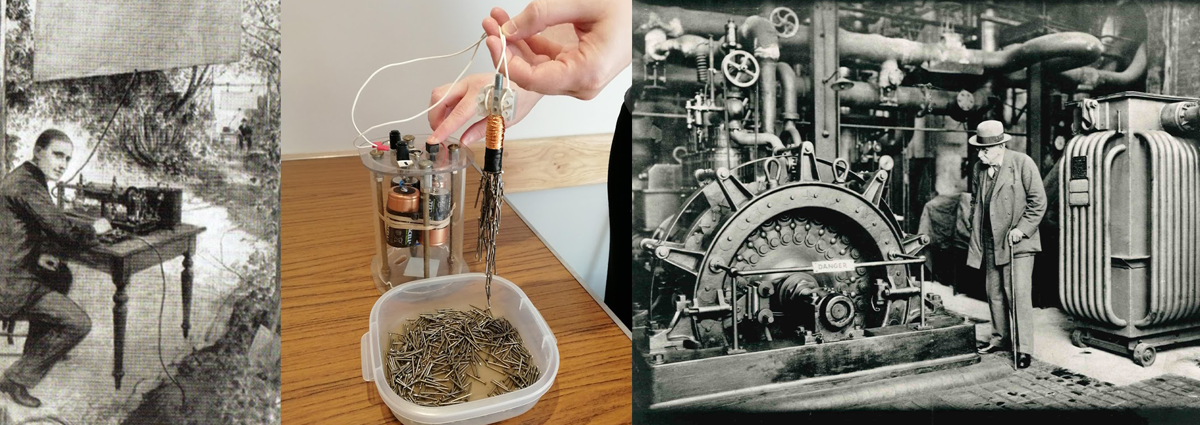In the 1890’s, Marconi and Colonel Crompton set up ground-breaking electrical engineering factories in Chelmsford. Inspired by their work, pupils will take on the role of electrical engineers. They will test their own ideas by conducting experiments and building a variety of different circuits. Through these experiments, they will explore how Crompton and Marconi used electricity to power motors and generate radio waves that enabled communication without being joined by wires.
This hands-on session gives pupils lots of opportunities to generate and test their own ideas as they explore the story of Marconi and Colonel Crompton. Pupils will:
- Make electromagnets and carry out fair tests to investigate factors that might affect their strength.
- Build a mini motor and generator to power a lighthouse and pulley system.
- Construct simple circuits and investigate what happens as they add more components.
- Test and sort a variety of electrical conductors and insulators, comparing materials used in the original 1865 transatlantic electric telegraph cable and our modern cables.
- Investigate which metals are the best conductors, and are all conductors metal?
- Train as Marconi Morse radio operators and discover the link between electricity, radio, Marconi and the Titanic.
Teacher feedback
“The children were engaged throughout and enjoyed exploring electricity and Morse code for the first time. We thought it was amazing and loved seeing the children experiment on their own. It was pitched perfectly.”
Roxwell Primary School
Stay for a day
For two classes or a whole day visit, combine this session with our free History Makers Trail or Sparky's digital museum trail which will give your pupils an opportunity to explore the whole museum, see objects talked about in the session and find out more about other significant local people.
National curriculum links
- Construct a simple series of electrical circuits using a variety of different components and identify possible causes when components do not work
- Recognise that a switch opens and closes a circuit and use this to control components in a simple series circuit
- Recognise some common conductors and insulators, and associate metals with being good conductor
- Compare and give reasons for variations in how components function, including the brightness of bulbs, speed of a motor
- Work scientifically, talking and sharing ideas, designing experiments to test ideas and apply learning to solve problems
Capacity
One class per session.
Facilities
We have indoor lunch space available, plus picnic benches and a children's play area in the park. The museum is fully accessible with a lift and an accessible toilet.

